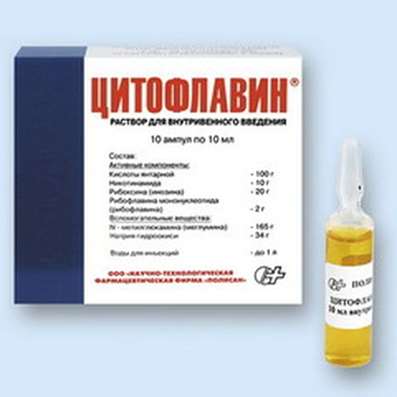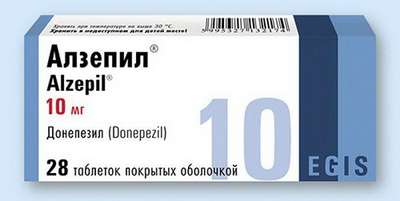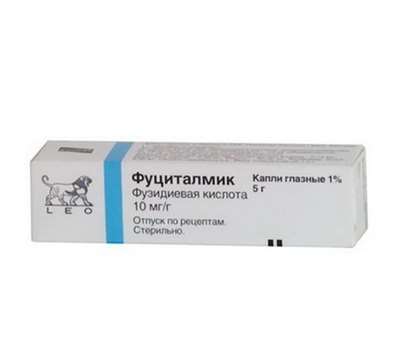Instruction for use: Amtolmetin guacil (Amtolmetinum guacilum)
I want this, give me price
Pharmacological groups
NSAIDs - Derivatives of acetic acid and related compounds
Nosological classification (ICD-10)
G43 Migraine
The pain of migraine, Migraine, hemiplegic migraine, Migraine headache, A migraine attack, Continuous headache, hemicranias
K08.8.0 * Painful toothache
Dentinal pain, Dentinal pains, Pain pulpitis, Anesthesia in dentistry, Pain syndromes in dental practice, Pain after removal of tartar, Pain when extracting a tooth, Toothache, Pain after dental interventions
M06.9 Other specified rheumatoid arthritis
Rheumatoid arthritis,Pain syndrome in rheumatic diseases, Pain in rheumatoid arthritis, Inflammation in rheumatoid arthritis, Degenerative forms of rheumatoid arthritis, Children's rheumatoid arthritis, Exacerbation of rheumatoid arthritis, Acute articular rheumatism, Rheumatic arthritis, Rheumatic polyarthritis, Rheumatoid arthritis, Rheumatic polyarthritis, Rheumatoid arthritis, Rheumatoid arthritis of active course, Rheumatoid arthritis, Rheumatoid polyarthritis, Acute rheumatoid arthritis, Acute rheumatism
M10.9 Gout, unspecified
Arthritis Gouty, Acute gouty arthritis, Acute attack of gout, Gouty Arthritis, Articular syndrome with exacerbation of gout, Articular syndrome with gout, Urarturia, Chronic arthritic arthritis, Acute gout, Salt diathesis
M19.9 Arthrosis, unspecified
Change in brush with osteoarthritis, Osteoarthritis, Osteoarthrosis, Arthrosis of large joints, Pain syndrome in osteoarthritis, Pain syndrome in acute inflammatory diseases of the musculoskeletal system, Pain syndrome in chronic inflammatory diseases of the musculoskeletal system, Deforming arthrosis, Deforming osteoarthritis, Deforming osteoarthritis of joints, Osteoarthritis in the acute stage, Osteoarthritis of large joints, Acute pain syndrome with osteoarthritis, Post-traumatic osteoarthritis, Rheumatic osteoarthritis, Spondylarthrosis, Chronic osteoarthritis
M25.5 Pain in the joint
Arthralgia, Pain syndrome in musculo-articular diseases, Pain syndrome in osteoarthritis, Pain syndrome in osteoarthritis, Pain syndrome in acute inflammatory diseases of the musculoskeletal system, Pain syndrome in chronic inflammatory diseases of the musculoskeletal system, Pain in the joints, Soreness of the joints, Soreness of joints in severe physical exertion, Painful inflammatory joint damage, Painful conditions of the musculoskeletal system, Painful joint conditions, Painful traumatic affection of joints, Pain in the musculoskeletal system, Pain in Shoulder Joints, Pain in the joints, Joint pain, Joint pain with injuries, Musculoskeletal pain, Pain with osteoarthritis, Pain in the pathology of the joints, Pain in rheumatoid arthritis, Pain in chronic degenerative bone diseases, Pain in chronic degenerative joint diseases, Bone-joint pain, Joint pain, Arthritic pain of rheumatic origin, Articular pain syndrome, Joint pain, Rheumatic pain, Rheumatic pains
M45 Ankylosing spondylitis
Ankylosing spondylarthrosis, Marie-Strumpel disease, Ankylosing spondylitis, Pain syndrome in acute inflammatory diseases of the musculoskeletal system, Pain syndrome in chronic inflammatory diseases of the musculoskeletal system, Bechterew's disease, Ankylosing spondylitis, Diseases of the spinal column, Rheumatic spondylitis, Bechterew-Marie-Strumpel disease
M65 Synovitis and tendosynovitis
Acute tenosynovitis, Tendovaginitis (tenovaginitis), Tendosinovit (tenosynovitis), Tendovaginitis, Osteoarthritis in musculo-articular diseases, Inflammatory disease of soft tissues, Nonspecific tenosynovitis, Tendosinovit
M71 Other bursopathies
Bursitis, Bursopathy, Diseases of soft tissues, Osteoarthritis in musculo-articular diseases, Inflammatory disease of soft tissues, Subacute bursitis
M79.1 Myalgia
Myofascial pain syndromes ,Pain syndrome in musculo-articular diseases, Pain syndrome in chronic inflammatory diseases of the musculoskeletal system, Pain in the muscles, Tenderness of muscles, Muscular soreness in severe physical exertion, Painful conditions of the musculoskeletal system, Pain in the musculoskeletal system, Pain in the muscles, Pain at rest, Muscle aches, Muscle pain, Musculoskeletal pain, Myalgia, Muscle pain, Muscle pain at rest, Muscle pain, Muscular pain of non-rheumatic origin, Muscle pain of rheumatic origin, Acute muscle pain, Rheumatic pain, Rheumatic pains, Myofascial syndrome, Fibromyalgia
M79.2 Neurology and neuritis, unspecified
Pain syndrome with neuralgia, Brachialgia, Occipital and intercostal neuralgia, Neuralgia, Neuralgic pain, Neuralgia, Neuralgia of intercostal nerves,Neuralgia of the posterior tibial nerve, Neuritis, Neuritis traumatic, Neuritis, Neurological Pain Syndromes, Neurological contractures with spasms, Acute neuritis, Peripheral neuritis,Post-traumatic neuralgia,Severe pain of a neurogenic nature, Chronic neuritis, Essential neuralgia
N94.6 Dysmenorrhea Unspecified
Pain during menstruation, Functional disorders of the menstrual cycle, Menstrual cramps, Emmeniopathy, Pain during menstruation, Painful menstrual irregularities, algomenorrhea, algomenoreya, Pain smooth muscle spasm, Pain spasm of smooth muscles (renal and biliary colic, intestinal spasms, dysmenorrhea), Pain spasm of smooth muscles of internal organs (kidney and biliary colic, intestinal spasms, dysmenorrhea), Disalgomenoreya, dysmenorrhea, Dysmenorrhea (essential) (Exfoliative), menstrual disorder, menstruation painful, metrorrhagia, Violation of the menstrual cycle, Menstrual irregularities, Prolaktinzavisimoe menstrual disorders, Prolaktinzavisimoe menstrual dysfunction, Pain spasm of smooth muscles of internal organs, Spasmodic dysmenorrhea, Primary disalgomenoreya
R51 Headache
Pain in the head, Cephalgia, Pain with sinusitis, Pain in the back of the head, Painful headache, Headache of vasomotor genesis, Headache of vasomotor origin, Headache with vasomotor disorders, Headache, Neurological headache, Serial headache
R52.2 Other constant pain
Pain syndrome, rheumatic origin, Pain at vertebral lesions, Pain in the chamber, Pain for burns, Pain syndrome weak or moderate, Perioperative pain,Moderate to severe pain, Moderately or weakly expressed pain syndrome, Moderate to severe pain, Ear pain of otitis, Neuropathic pain, neuropathic pain
R52.9 Unspecified Pain
Pain after cholecystectomy, Pain shooting, Non-malignant pain, Obstetric and gynecological pain, Pain syndrome, Pain in the postoperative period, Pain in the postoperative period after orthopedic surgery, Pain of inflammatory genesis, Pain than cancer genesis, Pain syndrome after diagnostic procedures, Pain after surgery Diagnostic, Pain after surgery, Pain after orthopedic surgery, Pain after injuries, Pain after the removal of hemorrhoids, Pain at the non-rheumatic inflammation of nature, Pain in inflammatory lesions of the peripheral nervous system, Pain in diabetic neuropathy, Pain in acute inflammatory diseases of the musculoskeletal system, Pain when the tendon pathology, Pain smooth muscle spasm, Pain spasm of smooth muscles (renal and biliary colic, intestinal spasms, dysmenorrhea), Pain spasm of smooth muscles of internal organs, Pain spasm of smooth muscles of internal organs (kidney and biliary colic, intestinal spasms, dysmenorrhea), Pain in trauma syndrome, Pain with injuries and after surgical interventions, Pain in chronic inflammatory diseases of the musculoskeletal system, Pain with duodenal ulcer, Pain syndrome in gastric ulcer, Pain syndrome in gastric ulcer and duodenal ulcer, pain, Pain during menstruation, pain syndromes, painful condition, Painful foot fatigue, Sore gums when wearing dentures, Soreness of the cranial nerves exit points, Painful menstrual irregularities, Painful dressings, Painful muscle spasm, Painful teeth growth, Melosalgia, Pain in the area of the surgical wound, Pain in the postoperative period, Pain in the body, Pain after diagnostic procedures, Pain after orthopedic surgery, Pain after surgery, The pains of the flu, Pain in diabetic polyneuropathy, Pain for burns, Pain during sexual intercourse, Pain during diagnostic procedures, Pain during therapeutic procedures, for colds Pain, Pain in sinusitis, Pain in trauma, Pain traumatic, The pain in the postoperative period, Pain after diagnostic procedures, The pain after sclerotherapy, Pain after surgery, postoperative Pain, Pain postoperative and posttraumatic, posttraumatic pain, Pain when swallowing, Pain in infectious and inflammatory diseases of the upper respiratory tract, The pain of burns, The pain in traumatic muscle injury, Pain in trauma, The pain of tooth extraction, The pain of traumatic origin, Pain caused by spasm of smooth muscles, Expressed pain syndrome, Expressed pain syndrome, traumatic origin, Postoperative pain, Post-traumatic pain, Post-traumatic pain syndrome, Torpid pain, Traumatic pain, Traumatic pain, Mild pain, Moderately severe pain, Moderate pain, Polyarthralgia with polymyositis
R68.8.0 * Inflammatory syndrome
Painful syndrome of inflammatory genesis, Pain syndrome with inflammation of non-rheumatic nature, Pain syndrome with inflammatory lesions of the peripheral nervous system, Painful inflammation of the shoulder joint, Painful inflammation after trauma or surgery, Painful inflammation after surgery, Painful hemorrhoids, Inflammation of the tympanic membrane, Inflammation of the larynx, Inflammation of the gums, Inflammation of cellulose, Inflammation of lymph nodes, Tonsillitis, Inflammation of muscles, Inflammation of soft tissues, Inflammation of the mouth, Inflammation after surgery and trauma, Inflammation after orthopedic surgery, Inflammation after trauma, Inflammation in rheumatoid arthritis, Inflammation of the middle ear, Inflammatory gum disease, Inflammatory diseases of the eyelids, Inflammatory eye diseases, Inflammatory swelling of soft tissues, Inflammatory processes, Inflammatory processes after surgical interventions, Inflammatory process, Inflammatory Syndrome, Inflammatory syndrome of non-rheumatic origin, Inflammatory syndrome after surgery, Purulent infections, Infringements of function of a liver of an inflammatory etiology, Acute inflammation of the musculoskeletal tissue, Pre-inflammatory soft tissue inflammation
T14.9 Injury unspecified
Pain syndrome after trauma, Pain syndrome with injuries, Pain syndrome with trauma and after surgery, Pain in case of injury, Pain of a traumatic nature, Joint pain with injuries, Postoperative and post-traumatic pain, Pain in case of injury, Pain of a traumatic origin, Severe pain syndrome of traumatic origin, Deep tissue damage, Deep scratches on the trunk, Closed injury, Minor Household Injuries, Minor skin damage, Violations of the integrity of soft tissues, Uncomplicated trauma, Extensive traumatic injury, Acute pain syndrome of traumatic origin, Edema with trauma, Postponed sports injuries, Post-traumatic pain, Soft tissue injuries, Joint wounds, Sports injuries, Injury, Traumatic pain, Traumatic pains, Traumatic infiltrate,Injuries to sports
T30 Thermal and chemical burns, unspecified
Pain syndrome with burns, Pain in burns, Pain with burns, Sluggishly healing post-burn wounds, Deep burns with a wet scab, Deep burns with abundant compartments, Deep burn, Laser burn, Burn, Burn of rectum and perineum, Burn with mild exudation, Burn disease, Burn injury, Superficial burn, Superficial burn of I and II degree, Superficial skin burns, After-burn trophic ulcer and wound, Post-burn complication, Loss of fluid in burns, Sepsis burn, Thermal burns, Thermal skin lesions, Thermal burn, Trophic after-burn ulcers, Chemical burn, Surgical burn
CAS 87344-06-7
Characteristics of Amtolmetin guacil
Amtolmetin guacil is the precursor of tolmetine; NSAIDs (non-steroidal anti-inflammatory drugs), nonselective COX inhibitor (cyclooxygenase).
Pharmacology
Pharmacological action - anti-inflammatory, antipyretic, analgesic, gastroprotective, desensitizing.
Pharmacodynamics
Amtolmetin guacil is an NSAID, a non-selective COX inhibitor. Amtolmetin guacil is a precursor of tolmetine. Has anti-inflammatory, analgesic, antipyretic, desensitizing effect, has a gastroprotective effect. Suppresses inflammatory factors, reduces platelet aggregation; oppresses COX-1 and COX-2, disrupts the metabolism of arachidonic acid, reduces the formation of PG (including in the focus of inflammation), suppresses the exudative and proliferative phases of inflammation. Reduces the permeability of capillaries; stabilizes the lysosomal membranes; inhibits synthesis or inactivates mediators of inflammation (PG, histamine, bradykinins, cytokines, complement factors). It blocks the interaction of bradykinin with tissue receptors, restores disturbed microcirculation, and reduces pain sensitivity in the inflammatory focus. Affects thalamic centers of pain sensitivity; reduces the concentration of biogenic amines with algogenic properties; increases the threshold of pain sensitivity of the receptor apparatus. Eliminates or reduces the intensity of pain syndrome, reduces morning stiffness and swelling, increases the amount of movement in the affected joints after 4 days of treatment.
The protective effect of ammonthmethine guacil on the gastric mucosa is realized by stimulating capsaicin receptors (also called vanilloid receptors) present in the gastrointestinal wall. Due to the presence of the vanillin group in the ammonthymine of guacil, it can stimulate capsaicin receptors, which in turn causes the release of the peptide encoded by the calcitonin gene (PCHA) and the subsequent increase in the production of nitric oxide (NO). Both these actions create a counterbalance to the negative effect caused by a decrease in the amount of GHGs due to inhibition of COX. Amtolmetin guacil was well tolerated by patients with prolonged use (for 6 months).
Pharmacokinetics
Absorption of amotolmetine guacil after oral administration is rapid and complete. Basically, the drug is concentrated in the walls of the stomach and intestines, where a very high concentration is maintained for 2 hours after ingestion. After absorption of Amtolmetin, guacil is immediately hydrolyzed by plasma esterases to form three metabolites: MED5, tolmetin and guiacol, transformed to the active metabolite of tolmetine, which penetrates into tissues and has a pharmacological effect. The main way of metabolism of tolmetine is the oxidation of the methyl group in the benzene ring to the carboxyl ring.
Tmax after oral administration - 20-60 minutes.
The connection with plasma proteins is 99%. T1 / 2 in adults - about 5 hours. Within 24 hours, the drug is almost completely removed from the body in the form of glucuronides (with urine - 80%, with bile - 20%).
Use of Amtolmetin Guacil
Rheumatoid arthritis; osteoarthritis; ankylosing spondylitis; articular syndrome with exacerbation of gout; bursitis; Tendovaginitis.
Pain syndrome (weak and moderate intensity): arthralgia; myalgia; neuralgia; migraine; toothache and headache; algodismenorea; pain with injuries, burns.
It is intended for symptomatic therapy, reducing pain and inflammation at the time of use, the progression of the disease is not affected.
Contraindications
Hypersensitivity to Amtolmetin, tolmetin; complete or incomplete combination of bronchial asthma, recurrent nasal polyposis or paranasal sinuses and intolerance to acetylsalicylic acid and other NSAIDs (including in the anamnesis); erosive and ulcerative changes in the mucous membrane of the stomach and duodenum, active gastrointestinal hemorrhage; cerebrovascular or other bleeding; inflammatory bowel disease (Crohn's disease, ulcerative colitis) in the phase of exacerbation; hemophilia and other bleeding disorders; Decompensated heart failure; hepatic insufficiency or active liver disease; marked renal failure (Cl creatinine <30 ml / min), progressive kidney disease, confirmed hyperkalemia; period after aortocoronary shunting; arterial hypertension; pregnancy; lactation period; children's age till 18 years.
Restrictions for use
Hyperbilirubinemia; chronic heart failure; cardiac ischemia; cerebrovascular diseases; dyslipidemia / hyperlipidemia; diabetes; diseases of peripheral arteries; smoking; chronic renal failure (Cl creatinine 30-60 ml / min); ulcerative lesions of the gastrointestinal tract (gastrointestinal tract) in the anamnesis; presence of Helicobacter pylori infection; long-term use of NSAIDs; alcoholism; severe physical illness; elderly age; simultaneous administration of oral GCS (including prednisolone), anticoagulants (including warfarin), antiaggregants (including acetylsalicylic acid, clopidogrel), SSRIs (including citalopram, fluoxetine, paroxetine, sertraline ).
Side effects
The frequency of side effects is classified according to the frequency of occurrence of the event: often - (1-10%); infrequently - (0,1-1%); rarely - (0,01-0,1%); very rarely - (<0.01%), including individual messages.
From the digestive system: often - nausea; infrequently - dyspepsia, discomfort in the stomach and intestines, bloating; rarely - abdominal pain, diarrhea, vomiting, constipation, gastritis; very rarely - a peptic ulcer, a violation of the liver.
From the urinary system: an increase in the content of urea nitrogen in the blood, urinary tract infection.
From the senses: rarely - noise in the ears, visual impairment.
From the respiratory system: rarely - bronchospasm, dyspnea, rhinitis, laryngeal edema.
From the central nervous system (central nervous system): often - dizziness, headache, drowsiness; rarely - depression.
From the CCC (cardiovascular system): often - lifting blood pressure.
From the hemopoiesis: rarely - anemia, thrombocytopenia, agranulocytosis, leukopenia.
On the part of the skin: infrequent - skin rash (including maculopapular), purpura; rarely - exfoliative dermatitis (fever with chills or without, redness, densification or flaking of the skin, swelling and / or tenderness of the tonsils), hives, Stevens-Johnson syndrome, Lyell's syndrome.
Allergic reactions: rarely anaphylaxis or anaphylactoid reactions (skin discoloration of the face, skin rash, hives, skin itch, tachypnea or dyspnea, edema of the eyelids, periorbital edema, shortness of breath, shortness of breath, chest pain, wheezing).
Other: often - weakness; rarely - swelling (face, legs, ankles, fingers, feet, weight gain); rarely - excessive sweating, fever, lymphadenopathy; very rarely - swelling of the tongue.
Interaction
Inducers of microsomal oxidation in the liver (phenytoin, ethanol, barbiturates, rifampicin, phenylbutazone, tricyclic antidepressants) increase the production of hydroxylated active metabolites.
Reduces the effectiveness of uricosuric, hypotensive drugs (drug) and diuretics.
Strengthens the hypoglycemic effect of derivatives of sulfonylurea, the effect of anticoagulants, antiaggregants, fibrinolytic agents, side effects of estrogens, GCS and mineral corticoids.
Antacids and colestyramine reduce absorption.
Increases the concentration in the blood of lithium-containing drugs, methotrexate.
In some patients with impaired renal function, joint administration of NSAIDs and ACE inhibitors may lead to further impairment of kidney function.
Myelotoxic drugs increase the manifestation of hematotoxicity.
Overdose
Symptoms: abdominal pain, nausea, vomiting, erosive-ulcerative gastrointestinal lesion, impaired renal function, metabolic acidosis.
Treatment: gastric lavage, the introduction of adsorbents (activated charcoal) and the conduct of symptomatic therapy (maintenance of vital body functions). There is no specific antidote.
Routes of administration
Inside.
Precautions for Amtolmetin guacil
During treatment, it is necessary to monitor the picture of peripheral blood and the functional state of the liver and kidneys.
Treatment should be discontinued 48 hours before the determination of 17-ketosteroids.
Influence on the ability to drive vehicles and work with machinery. During treatment, one should refrain from engaging in potentially dangerous activities that require increased attention and speed of mental and motor reactions.

 Cart
Cart





